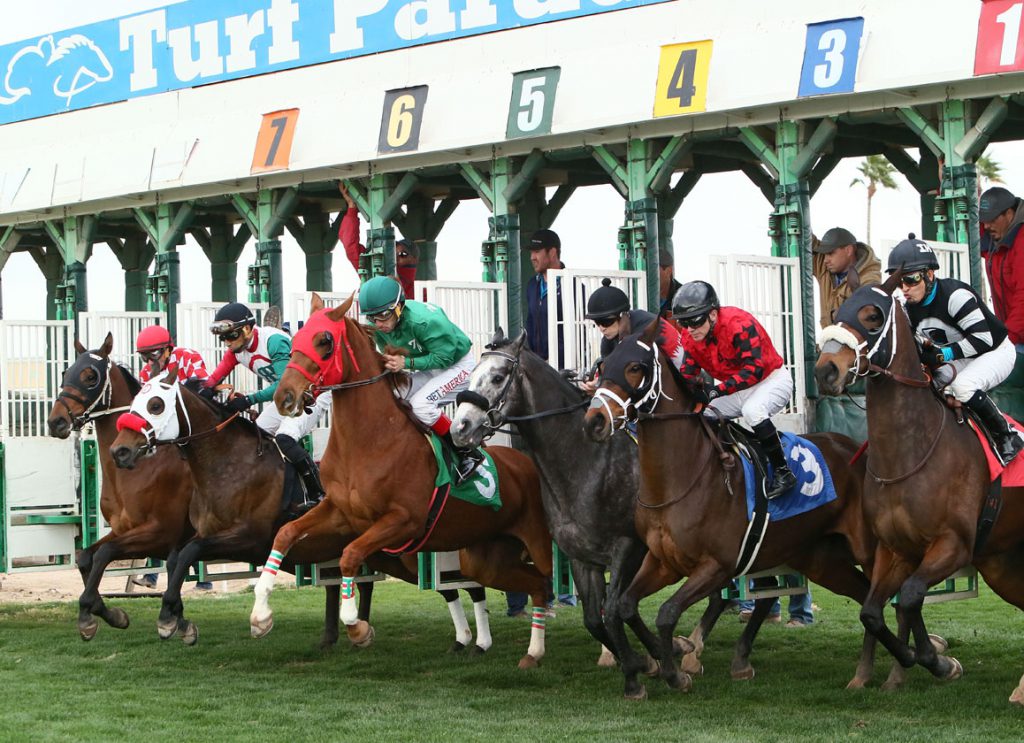Turf Paradise, which only weeks ago seemed either destined to remain dormant and in disrepair or perhaps even ready to face the wrecking ball, appears to be in the midst of orchestrating a remarkable comeback.
Track management, horsemen, and regulators all expressed confidence and a renewed sense of optimism during Thursday's Arizona Racing Commission (AZRC) meeting that the Phoenix track was on target to hit a Jan. 29 start date for the first commercial-track meet in the state since May.
Several stakeholders underscored during the Dec. 14 meeting that a better-than-expected demand for stall space at Turf Paradise is being driven by recently reported purse cuts in neighboring California, where both the soon-to-close Golden Gate Fields (-25%) and Santa Anita Park (-5%) are projected to offer less money this winter.
“We are getting, at this time, more horses wanting to come in to Turf than we had previously anticipated,” Turf Paradise's general manager, Vincent Francia, told commissioners.
“I think we are benefitting–and I don't like to benefit from someone else's misfortune–but what's going on in California is producing an influx of horses to come over for the race meet,” Francia continued.
“I'm sure everybody has seen that Santa Anita is going to have to reduce their purses. No track wants to do that. But business is what guides that decision, and the primary reason is they're running six- and seven-horse fields, and our sport cannot survive on six-and seven-horse fields,” Francia said.
“The reason why I'm saying that [is] the anticipation of horses has exceeded our expectation for the upcoming meet. That is healthy for the Arizona racing industry to get back on its feet,” Francia said.
The projected slashing of purses in California and the resulting out-of-state migration was also discussed later on Thursday at the California Horse Racing Board's monthly meeting, where that commission's vice-chair, Oscar Gonzales, castigated Santa Anita and Golden Gate for contributing to the horse outflux.
“We have Arizona that's getting ready to reopen with higher purses,” Gonzales said. “Meanwhile, [California tracks are] cutting them. I just don't think that there's anybody paying very close attention about how we make sure we're retaining quality horses and quality horsemen.”
J. Lloyd Yother, the president of the Arizona Horsemen's Benevolent and Protective Association, said during the AZRC meeting that Turf Paradise has gone from a situation of concern over possibly not being able to fill entries to potentially not having enough stabling to house all the horses that reportedly are on their way to Phoenix.
“The fear in the beginning was that we wouldn't have enough horses,” Yother said. “But according to the racing secretary [Robbie Junk], we're getting more than we anticipated, which is a good thing. So we may have ample number of horses. The only thing I'm concerned with is that we have enough barn area in the event that we do have those horses.”
Neither Francia nor Yother mentioned a specific number of horses that are expected to be on the grounds.
But Francia did confirm that only barns A through D and barn K would be used for stabling.
Yother said barns H through L “possibly need to be condemned.”
Trainers and their crews will be allowed on the backside starting Friday to set up stalls. Horses can begin arriving Monday, Dec. 18.
Francia said the previously problematic main track and rail, which had come under scrutiny from the Horseracing Integrity and Safety Act (HISA) Authority earlier this year, has now been brought up to spec.
“It took two weeks [of] 12-hour days, and the track is unlike anything that I have ever seen,” Francia said.
Yother offered this assessment: “The track was in horrible condition. It was unsafe. The rail wasn't right. But the management did step up [and] did a marvelous, marvelous job….
“The rail is excellent,” Yother continued. “The [dirt] track is good. The turf [seems] great. I'm just worried maybe [there's] overseeding with the rye grass and how much [use it will be able] to handle and [whether] the root system will be able to hold up. That's to be seen.”
Yother did articulate concerns about the half-mile training track at Turf Paradise.
“The training track is in bad, bad condition, and it needs to be [made safe],” Yother said. “I encourage management to do something to get the training track in as good shape as the main track.”
Back on Dec. 5, the AZRC gave unanimous but conditional approval for Turf Paradise's current owner, Jerry Simms, to conduct a Jan. 29-May 4 race meet.
Simms and Arizona horsemen have had an acrimonious business relationship for the better part of two decades, and permission for the upcoming meet was granted after one proposed sale of the track property fell through in September and another quickly-put-together sale is currently stalled but reportedly ongoing.
The conditions attached to the licensure have to do with Turf Paradise either complying with or getting the HISA Authority to waive its requirement that stipulates a 90-day advance notice from any track before the start of racing. In addition, the Authority still has to accredit Turf Paradise in terms of overall safety standards.
Rudy Casillas, the deputy director of the AZRC's racing division, told commissioners on Thursday that “From a regulatory standpoint, the [AZRC] and HISA are doing everything reasonably possible to expedite the process while maintaining integrity and safety.”
The post California’s Purse-Cut Woes Driving Horses To Turf Paradise appeared first on TDN | Thoroughbred Daily News | Horse Racing News, Results and Video | Thoroughbred Breeding and Auctions.


